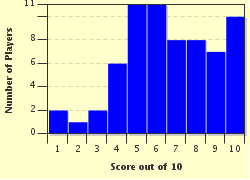Quiz Answer Key and Fun Facts
1. On this early spring morning both Clark and Carole are in the yard. What feather color on the crown of the male head distinguishes male and female mourning doves?
2. I've just added a bird bath close to the feeder to watch the unique way that mourning doves drink. I'm watching my camera display as Clark and Carole find a perch to observe and determine whether it's safe to drink. How is the way that mourning doves drink unique?
3. Looking at the camera display I see that Clark has now started courting Carole. Are the mourning doves monogamous?
4. Now that Clark and Carole have mated, Clark shows Carole several nest sites. Which of the mourning doves will actually build the nest?
5. I've been watching Clark and Carole on the camera display while for the last two weeks they've been incubating the two eggs in their nest. What color are a mourning dove's eggs?
6. On my camera display I saw the baby mourning doves leave the nest after about two weeks. Are the squabs on their own now?
7. This evening as I watch from my camera display Carole and Clark are perching on a telephone wire. I'm thinking about the fact that today is the start of mourning dove hunting season. Which of these Federal laws protects mourning doves?
8. As I'm watching Clark and Carole and the other birds in the camera display I can see one of the other birds has a growth on its foot. This bird may be infected with the avian pox. Are the mourning birds susceptible to disease?
9. From the camera display I often watch Clark and Carole walking along the ground and feeding. What makes up the largest portion of a mourning dove's diet?
10. It's early on a winter morning, with snow on the ground and Clark is feasting under the bird feeder. Including migrations, where can mourning birds generally be found?
Source: Author
mlcmlc
This quiz was reviewed by FunTrivia editor
Tizzabelle before going online.
Any errors found in FunTrivia content are routinely corrected through our feedback system.

